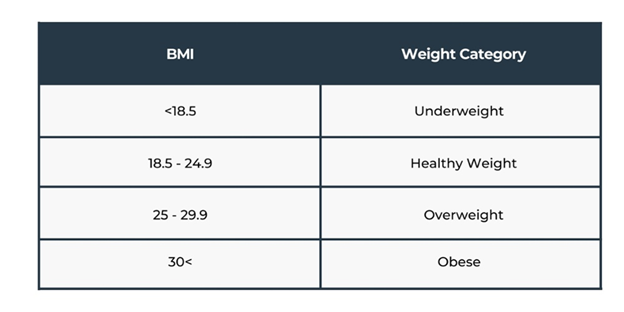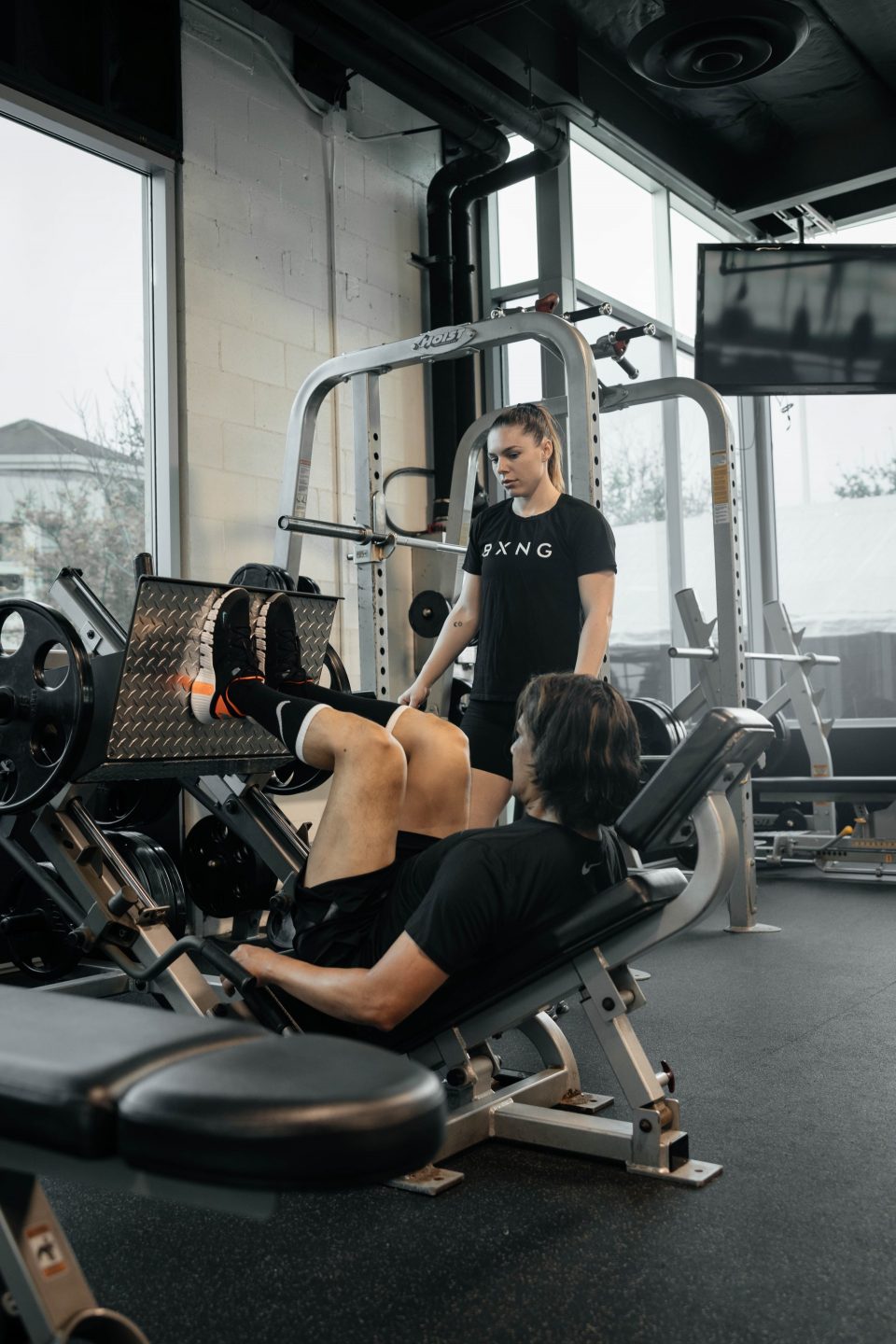How to Exercise to Gain Muscle and Shape Body
While it is imperative for some people to lose weight in order to stay healthy or reach specific goals, it is also important for some to gain muscle / weight. Weight gain can be a part of gaining muscle or hitting a healthy weight for your BMI. Building mounds of new lean muscle means hitting the weights and learning what works best for your body.
Building muscle and gaining weight requires positive energy balance – meaning you take in more calories than you burn. It takes roughly 2,800 calories to build a pound of muscle with a large support from protein. It takes a good amount of trial and error to see how much your body specifically needs in order to build muscle while also staying lean or connecting to other goals.
Some research has shown that consuming lean protein 15 to 20 minutes prior and following your workout within an hour may help improve muscle gain. Remember, it’s not all about protein. It is about eating meals to meet your caloric expenditure and provide you with adequate nutrition to help build muscle, lose fat, and get stronger.
EAT, EAT, EAT
We are all here for it – eat, eat, eat! Eating the right thing at the right time is crucial for boosting muscle mass. This varies for everyone on how to get those meals or food in at the right time, but it is pretty standard to go with three meals a day, interspersed with post workout, pre-bed and snack meals. It is also recommended to get your body on a schedule because then it knows how / when to be hungry.
Prioritize Protein
You need protein to build and maintain muscle. The usual rule of thumb is usually 1g per pound of body-weight. For example, if you weight 150 lbs then you should be getting between 140-160g of protein. Try to include whole protein sources with each meal to help feed your muscles, aid in recovery, and
If you feel too skinny or not strong enough, then the first thing might be for you to check if you’re underweight, and the easiest way to do it is by checking your BMI. Being underweight can be as dangerous as being overweight, causing health implications like anemia, weak bones, and/or fertility issues. The BMI: Body Mass Index measures your body weight based on your height and age. This is an accessible way to check if you’re underweight, but make sure to check in with a professional nutritionist.
The secret to gaining weight keeps being the same: eat enough food and eat the right kind of food.
You might think the easiest way to gain weight is to eat JUNK FOOD, but NO! The ultimate goal is to gain healthy weight. You might start your gaining weight journey by looking at how many calories you burn each day, then you’ll know how many more calories you need to add. Adding calories to a diet looks different for each individual depending on their goals and needs. But, if you’re a beginner, we recommend adding around 300 to 500 calories to your current diet.

INCLUDE SNACKS
If you want to gain weight, include some protein snacks into your diet! ADD protein bars like Cliff bars or eat some avocados and nuts to include healthy fats. Dense calorie food would have more and better results than a bag of chips or a chocolate chip cookie. The junkie food would only have you gaining fat and not muscle, plus it comes with a slide of health diseases like cardiovascular problems and diabetes.
EAT MINI MEALS
If you don’t have much appetite, then eating complete full meals may not work for you. Try eating small meals throughout the day to increase your calorie consumption. If you choose the right kind of food, then you can get more from small meals than a full meal with poor food choices. If you have a busy schedule and easily forget to eat, then organize and set up.
GET YOUR MACROS COUNT ON
If you’re serious about bulking up then you need to start measuring every calorie intake. Track down every meal you have with a counting macro app. You’re going to have to be very precise if you want to see some results which means: using measuring cups, reading the labels of the food you’re consuming, weighting the food you consume to make sure is the right amount, and including ALL ingredients like sauces and toppings.
Counting your MACROS means counting the 3 nutrients you eat the most to get energy: protein, carbohydrates, and fats. Counting macros helps you understand what the calories you’re gaining are composed of and how to get the best of each component. For example, if you’re low on protein consumption then you may need to make sure that the food you’re consuming has a higher amount of protein than fat or carbs. “One gram of protein is 4 calories. So if you eat 125 g of protein, you’re eating 500 calories from protein, leaving you 1,500 calories to split between your fat and carbs.”
If you go to the gym on a regular basis, you may have noticed yourself gaining weight. Don’t panic, it’s totally normal! In fact, many body builders go through a period of gaining weight to bulk up their muscles. Even other athletes, like boxers or football players, may engage in a calorie increase diet to qualify for a weight class. Although the ideal scenario is to gain muscle mass and not fat, it is recommended that you gain about ½ to 1 pound each week. However, if you lift weights, you’ll probably notice your abdomen getting bloated or seeing the scale go up and up. This is because of the extreme force you’re executing, or what fitness members call hypertrophy exercises. Basically, you overwork your muscle to fatigue it, almost to the point of breaking them up, which is why you’re sore after a heavy or long fast-paced weight lifting workout. This rupture creates inflammation to the muscle which has a denser weight than fat.
The muscle weight would take your scale up to the heights, so DON’T LOOK AT IT. Do not rely on the scale to track down your progress since it won’t tell you the difference between fat and muscle weight. If your primary goal is to lose weight, you can use it, but don’t obsess over it on a daily basis. In fact, do not weight yourself after a workout because it would most probably be a higher number than you would like to see. According to clinical exercise physiologist, Jeffrey Dolgan, “the scale number is a combination of muscle, fat, bone, the brain and neural tract, connective tissue, blood, lymph, intestinal gas, urine, and the air that we carry in our lungs”. He also tells us that right after a workout the mass percentage can increase up to 15%.
In conjunction with hypertrophy exercises and the right diet, you can bulk up your body and get the desired results. Choosing the right exercises for gaining mass is key to building up your sculpted body. It is important to incorporate muscle-gain exercises because with time your muscles would adapt to the constant stimulation of basic strength training and no longer respond to it. Everybody reacts differently to muscle gain exercises in regards to the rate and total amount of gains. Therefore, be patient and make sure to have a proper routine designed for you.
We have outlined some workouts you may include next time you’re in the gym trying to build up those muscles.
1. HEAVY COMPOUND EXERCISES
Start by doing heavy compound weight lifting. Compound exercises refers to any exercises where you’re using more than one muscle group at the same time. By relying on more than one muscle group, you can afford to load up the weight and go heavy which is what we aim when first bulking up to gain size and strength. Heavy compound exercises means shorter reps, but very high amounts of weight, so if you’re used to doing 12-15 reps you’re going to decrease to about 6-8 reps with insane weight. During this heavy lifting you would be training each body part once a week because the recovery part takes longer when building up mass muscle.
Here is a list of compound exercises that bulk you up:
a. SQUATS: This is the main exercise you’ll probably do to gain mass because it doesn’t require too much movement to complete it and you can add the most weight.

b.DEADLIFTS: Like squats, you can add high amounts of weight into this exercise. The important thing to remember here is to get the technique right. If you’re new to deadlifts, practice first with a barbell and make sure you’re lifting with your glutes and hamstrings, not your upper body. To learn the technique you could also start by using a foam cylinder to perfect the posture of your body going down with your arms stretched down.

C. BARBELL HIP THRUST: This is going to be your favorite exercise to build that glute muscle mass. Your glutes and hamstrings are two of the most difficult muscles to grow, but doing barbell hip rises would allow you to pack up that heavy weight. Remember to keep your legs not too far away from your hips and your feet not too far apart from each other.

After dedicating a few weeks to heavy lifting, we recommend you go into intensity exercises. This time you’ll do higher reps with lower weight, you’ll do up to 12-15 reps which helps with muscle hypertrophy. During these higher reps you’ll focus on isolation muscle exercises and then add a compound exercise at the end. This technique is called pre-exhaustion, where you fatigue one main muscle and finish it up with a compound exercise. This time you’ll work more than one body part together, for example: chest and back trained together the first day and then biceps and triceps together.
We hope this information it’s helpful during your fitness journey. Always remember that each person’s workout routine would look different, so make sure to focus on YOU! Find out what are your needs, your abilities, and your goals. Knowing what to expect of a fitness lifestyle would make it easier for you to build it up.






